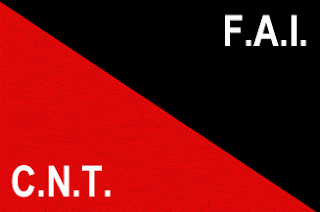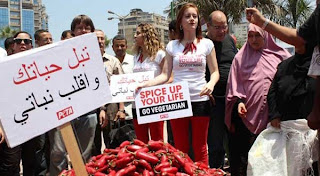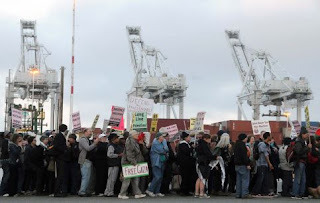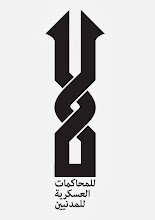Over 50 disgruntled workers from 25 different companies staged a silent protest stand outside the Cairo office of the International Labor Organization. A handful of plain-clothed policemen and uniformed officers were stationed outside the ILO office ahead of this protest. No scuffles or arrests took place.
The ILO staff reportedly expressed their surprise regarding this protest stand - although workers, labor lawyers, and activists had contacted the regional ILO office days earlier informing them of their planned visit.
One delegate from each company was allowed in to list their complaints and to voice their grievances before the ILO staff/secretaries. Fliers distributed outside, by workers and labor activists, mentioned that their demands focused on the realization of the rights stipulated in the ILO conventions, to which Egypt is a state-party.
Workers' fliers underlined the importance of respecting, implementing and upholding ILO conventions - especially Conventions No. 87 and 98 - concerning "Freedom of Association and Protection of the Right to Organize", and concerning the "Right to Organize and Collective Bargaining" respectively.
In light of these conventions, which Egypt ratified more than 50 years ago, the rights of unionization, federation, strike, safeguarding unionists, and collective bargaining were demanded; along with demands for an adequate minimum wage, health benefits, the provision of overdue periodic bonuses, unpaid profit-sharing, safe working conditions, full-time contracts, and the reinstatement of sacked co-workers, etc.
Amongst the workers present at this protest stand were those from the Mahalla Textile Company, Petrotrade Company (for petroleum/gas services,) Misr-Iran Textile Company, Al-Mustaqbal Cylinder Production Company, Indorama Shebine Textile Company, Female social-awareness guides (employed by the Ministry of Health,) Al-Ameriya Textile Company, South Cairo Mills, and Abul Sebae Textile Company, amongst others.
"Mohamed" a worker from the (private-sector) Al-Mustaqbal Cylinder Production Company said "we came here today not just to protest against the actions of our Lebanese company-owner, but to get our message across directly to those in the ILO and the UN." He added that 12 workers, including two local union council members, were unlawfully dismissed from their jobs in May of this year on charges of instigating a strike in the company.
"We've demonstrated outside the Egyptian Trade Union Federation, we've demonstrated outside the Lebanese Embassy in Cairo, and now we are demonstrating outside the regional headquarters of the ILO. We hope that they will heed our desperate calls."
Karim Reda, a sacked employee from the Petrotrade Company, said that a total of six workers/employees have been laid-off from their jobs at this public-sector enterprise (affiliated to the Ministry of Petroleum) due to their professional demands and workplace agitation. "We've knocked on all doors - from the Ministry of Petroleum, to the Egyptian Trade Union Federation, and parliament. We've been turned away at each one of these doorsteps, we hope that the ILO won't turn us away. Hopefully they'll be able to get the wheels turning once again, hopefully we'll be reinstated in our jobs."
When the worker-delegates stepped out of the ILO offices they said that the staff recommended that they meet again next month to discuss their specific cases. The delegates added that the ILO staff mentioned that they could not offer much in terms of enforcing conventions, reinstating workers, raising wages, pressuring company administrations, facilitating overdue payments, etc.
The ILO staff are reported to have recommended that workers strive to achieve these goals through their own efforts - to establish independent trade unions, to rally for their rights, etc. While the ILO would serve to document violations and bring it to the attention of the ILO authorities in Geneva.
The ILO operates on a system of tripartism - through which it seeks to maintain a "social dialogue" between the interests of governments, employers/capitalists and workers.



















